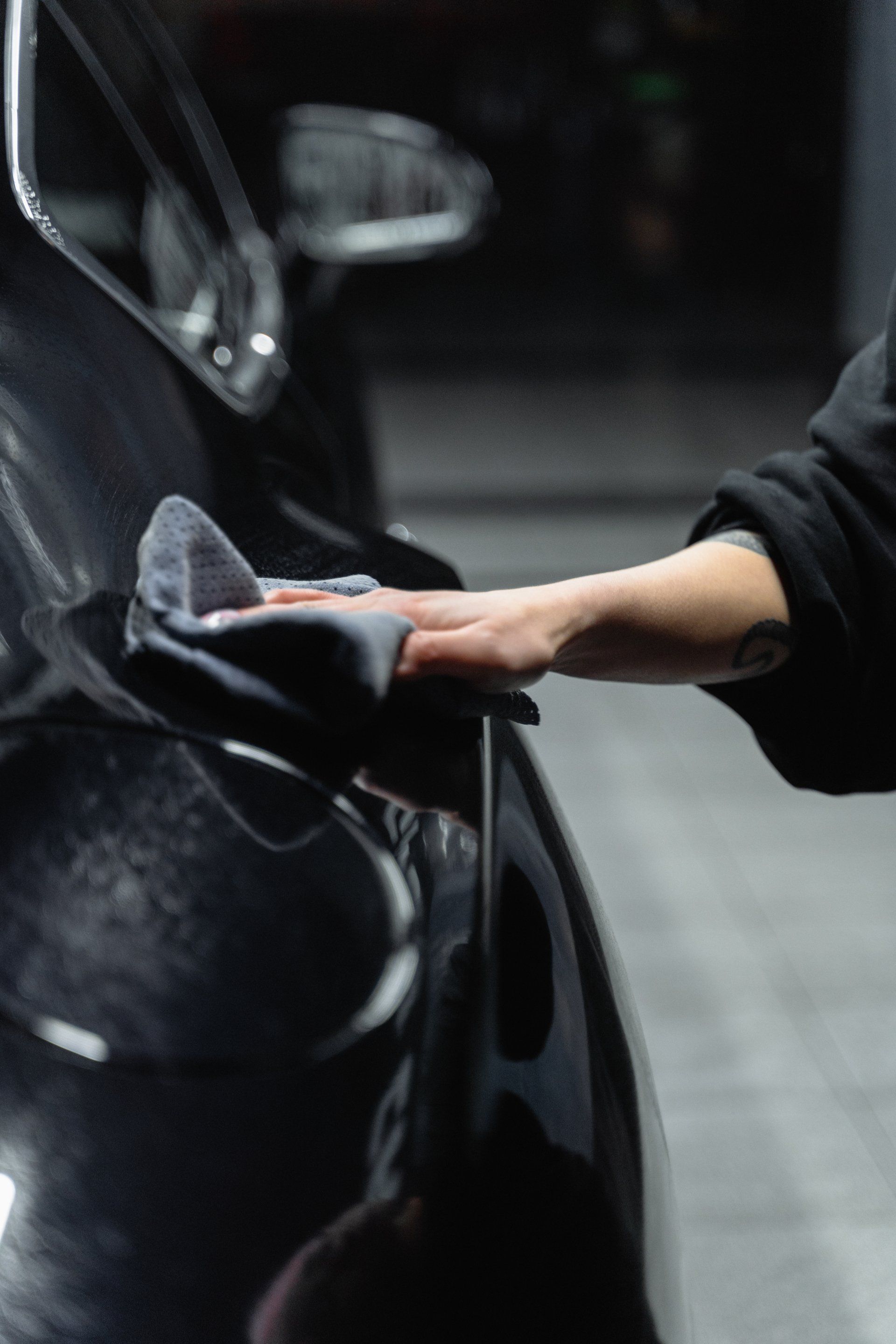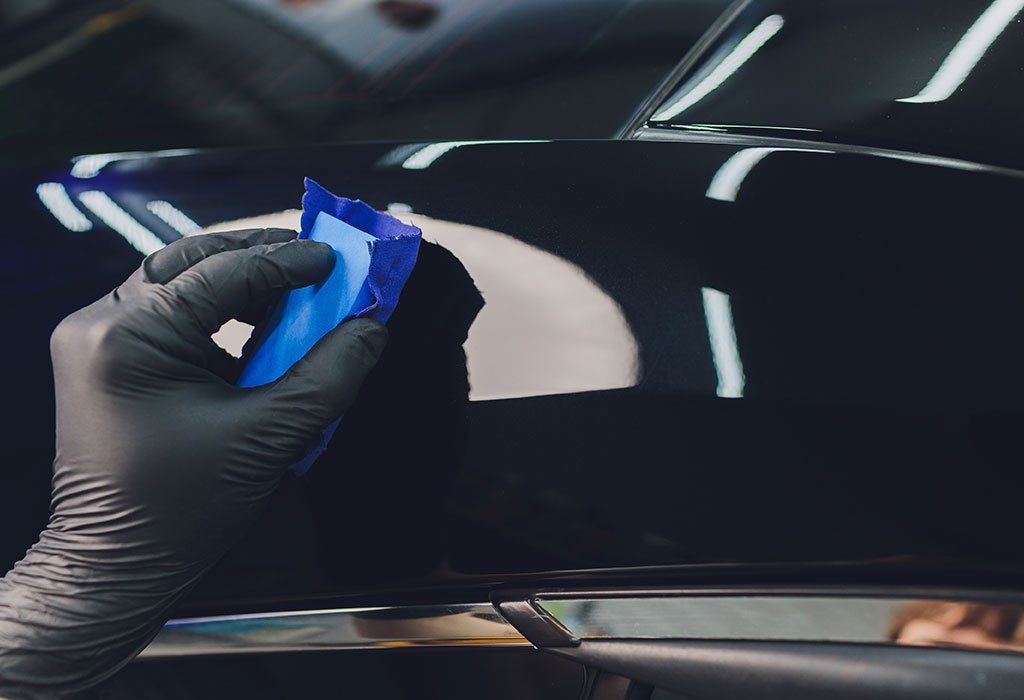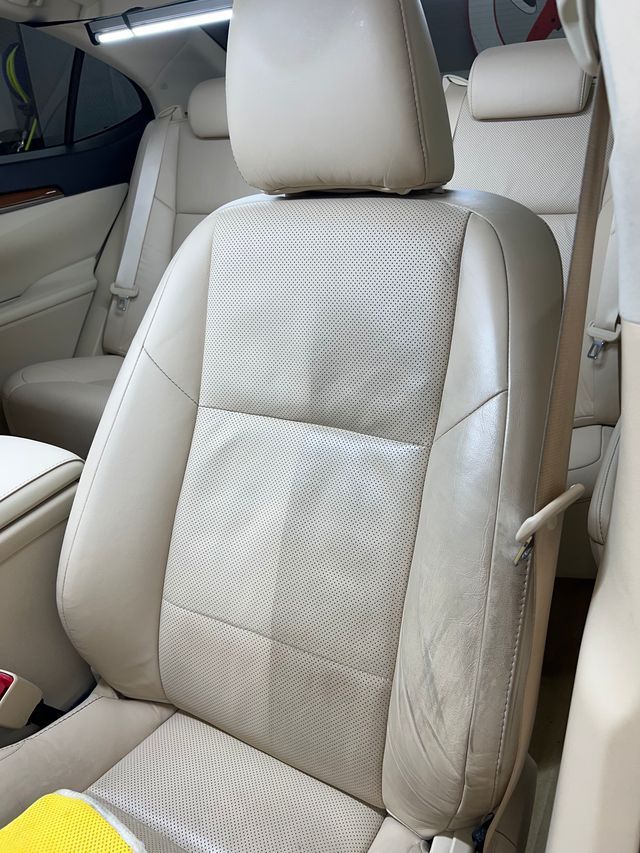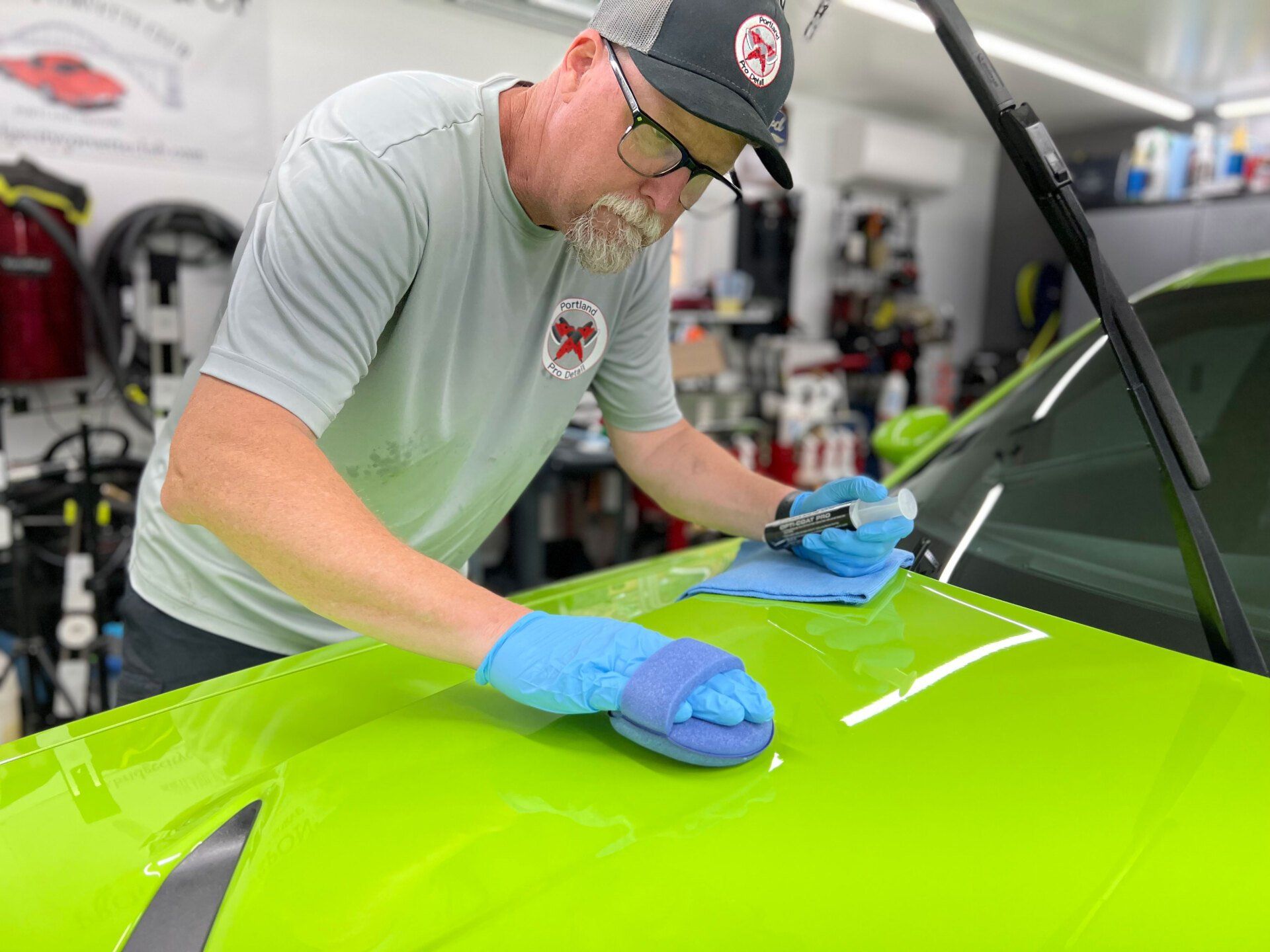Ceramic Coating and Water Beading: Understanding the Causes of Hydrophobic Effects
CALL (503) 444-7415
When it comes to keeping vehicles looking sharp, many people are on a constant quest for the ultimate protection. Enter ceramic coatings—an innovative solution that promises a glossy finish and repels water remarkably well. But what really makes these coatings so special? This article explores the science behind ceramic coatings, examining why they create mesmerizing water beads and how these features help keep cars shining through rain, mud, or even bird droppings. Water beading in ceramic coatings is primarily caused by the hydrophobic nature of the ceramic material, which repels water due to a strong molecular attraction between water molecules rather than the coated surface. This phenomenon minimizes contact time with contaminants, enhancing protection against elements like dirt and pollutants while ensuring the longevity of your vehicle's finish.
What is Ceramic Coating and How is it Applied?
The first step in applying a ceramic coating is surface preparation. This stage sets the foundation for a successful bond between the coating and your vehicle's paint. Start by thoroughly washing the car using a pH-neutral shampoo to avoid harming any existing wax or clear coat. The goal during this wash is to remove all dirt, dust, and grime, ensuring that nothing hinders the bonding process. After washing, it's essential to polish the paint surface. Polishing removes imperfections that can prevent the coating from adhering properly. This critical step is often overlooked, but skipping it can lead to unsatisfactory results. Think of it like preparing a wall before painting—if the surface isn't smooth and primed, the final look won't be optimal. Next comes the decontamination process, where a clay bar is used to lift embedded contaminants that regular washing failed to remove. This step might seem tedious, but it ensures that when the ceramic coating is applied, it bonds directly with clean paint without interference. Every detail counts in achieving the best possible result.
Applying the Coating
Once your vehicle is prepared, it's time to apply the ceramic coating itself. This process requires a specially designed applicator pad that allows for even coverage over small sections of the vehicle. Applying too much at once may result in unevenness, so patience is vital here. After applying the coating in a controlled manner, watch closely as it begins to "flash," showing a rainbow effect. This visual cue indicates when you should buff off the excess with a clean microfiber towel. Don't rush through this step, as buffing too early can lead to high spots or haze on your surface. Finally, patience is crucial—keep your vehicle indoors away from water and dust for at least 24-48 hours. This curing time ensures that the coating fully hardens and adheres to the paintwork effectively. Rushing this part can lead to issues that compromise the quality finish you're aiming for.
Hydrophobic Properties Explained
At the core of ceramic coatings lies their remarkable hydrophobicity. This term describes a surface's ability to repel water, resulting in a unique phenomenon: water beads up and rolls off rather than adhering to the surface. This behavior is critical for protecting your vehicle's paint from deterioration caused by moisture, dirt, and environmental contaminants. The science behind this effect is quite intriguing. The contact angle of a water droplet on a hydrophobic surface typically exceeds 90 degrees—often reaching up to 120 degrees with high-performance ceramics. This increased contact angle means that water molecules are more attracted to each other than they are to the coated surface. Consequently, rather than spreading out and forming a thin film, the water drops maintain their bead-like shape, effectively minimizing their contact time with potentially damaging substances. However, while hydrophobicity plays a significant role in protecting surfaces, it's essential to understand its limitations. While these properties suggest impressive defense against water-related issues, they don't automatically equate to comprehensive protection against all environmental threats. Strong water beading may indicate some level of resistance; however, it does not guarantee that surfaces will remain unscathed from UV radiation or harsh contaminants like bird droppings and road grime. Hydrophobic surfaces can reduce water adhesion by up to 90% compared to untreated materials. A well-applied ceramic coating typically achieves a thickness of 1 to 2 micrometers, contributing significantly to both its durability and performance. The balance between hydrophobic properties and overall surface protection should guide your product selection.
Water Beading: Causes and Effects
Water beading is a fascinating phenomenon that reflects the effectiveness of hydrophobic surfaces, such as those treated with ceramic coatings. When water encounters a highly hydrophobic surface, it doesn't spread out but instead clumps together, forming droplets that appear more spherical. This behavior is largely thanks to the high surface tension of water—the same property that makes water beads roll across freshly waxed car hoods after a rain shower. One of the remarkable features of these beads is their tendency to carry away dirt and grime as they roll off the surface. When water beads up on a coated car, it minimizes the time contaminants spend on the paint, reducing the risk of etching or oxidation from harmful substances like tree sap or bird droppings. The less contact water has with the paintwork, the lower the chance for unwanted marks and stains to develop over time. This hydrophobic reaction reduces water spots significantly—fewer spots equal less hassle for cleanup, leading to a consistently polished look without excessive maintenance effort. However, it's important to understand how these benefits depend on the quality of the ceramic coating used. Not all coatings are created equal; some might emphasize hydrophobic properties while sacrificing overall protection against UV rays or environmental contaminants.
Benefits of Ceramic Coatings
Ceramic coatings provide a multifaceted range of advantages that go far beyond just hydrophobic effects. For many car enthusiasts and casual vehicle owners alike, the allure of these coatings lies in their ability to create a robust barrier against common environmental hazards.
- Protection Against Contaminants: One of the standout benefits is this protective quality. The chemical structure of ceramic coatings enables them to resist a wide variety of contaminants that could otherwise mar your vehicle's exterior. For instance, bird droppings contain uric acid, which can etch through regular wax or polish if not cleaned promptly. However, with a ceramic coating, these contaminants simply bead up and roll off, significantly reducing the risk of any long-term damage.
- Enhanced Appearance: Another compelling benefit is how ceramic coatings enhance the visual appeal of your vehicle. When properly applied, they significantly deepen and clarify the color of your car's paintwork, giving it a vibrant and glossy finish that rivals that of showroom-quality vehicles. Traditional waxes may provide some shine, but they often dull over time; a ceramic coating maintains its luster for years—two to five years on average—thanks to its durable formulation.
- Easy Maintenance: The convenience associated with ceramic coatings doesn't stop at protective elements and enhanced aesthetics; they make routine maintenance much easier. Thanks to their hydrophobic properties, dirt and grime have a harder time sticking to surfaces treated with these coatings. Instead of laboriously scrubbing away at stubborn debris after every trip, you can often just hose down the surface to remove most contaminants effortlessly. This reduction in cleaning time can be especially beneficial during busy days or in inclement weather. With less dirt accumulation and easier cleaning methods at your disposal, ceramic coatings truly transform how we approach vehicle maintenance.
Self-Cleaning Mechanism
The self-cleaning capacity of ceramic coatings isn't just a perk; it's a key feature born from advanced chemistry. By harnessing their hydrophobic properties, these coatings create surfaces where water droplets can easily roll off. When rain falls or you wash your vehicle, those droplets don't merely slide down the car's surface; they actively pick up and carry away dirt particles along the way. This engaging phenomenon is scientifically known as the "lotus effect," named after the lotus leaf's ability to repel water and remain clean even in muddy environments. Just like water naturally beads up and rolls off these special leaves, ceramic coatings replicate this action on your vehicle. When surfaces are treated with high-quality ceramic coatings, the self-cleaning effect can drastically reduce the frequency of washes needed compared to untreated surfaces.
Comparing Ceramic Coating to Other Sealants
The world of automotive protection offers various options, but not all products are created equal. Traditional car wax provides coverage for merely weeks to months before needing to be reapplied. This frequent maintenance can quickly add up in both cost and effort. Synthetic sealants have made their mark by offering slightly prolonged protection, managing to last from six months to a year. Yet they still fall short when compared to ceramic coatings. With proper care, these advanced coatings can endure anywhere between two to five years—an impressive lifespan that quickly demonstrates their superior value. Traditional waxes afford moderate water repellency, which is sufficient but hardly remarkable. Synthetic sealants improve on this performance with good hydrophobic qualities. However, when it comes to ceramic coatings, we're talking about excellent water-beading capabilities that far surpass their counterparts. This superior performance leads to cleaner surfaces, as contaminants are less likely to stick. While ceramic coatings are more costly upfront, the low maintenance required after application can ultimately save you time and money in the long run. Applying a high-quality ceramic coating means fewer reapplications and less frequent detailing work down the road.
Performance Testing and Maintenance Tips
Ensuring that your ceramic coating continues to perform well involves regular maintenance and occasional performance testing. One of the simplest methods for evaluating the effectiveness of your coating is through water beading tests. By spraying water directly onto the surface, you can observe whether the water forms beads, indicating that the hydrophobic properties remain intact. Conduct these water beading tests regularly to monitor how well your coating holds up against environmental factors like rain, sun exposure, or road grime. This provides assurance that your investment is protected and prompts timely action if there's any decline in performance. When it comes to maintaining your ceramic-coated vehicle, the type of products you use plays a significant role. It's best to stick with pH-neutral car shampoos that clean without stripping the protective layer. Avoid automatic car washes that use brushes, as they can deteriorate the coating over time. Instead, hand wash your vehicle with soft microfiber mitts—this method is gentler and allows more control while cleaning. Occasional application of a ceramic coating booster is also recommended. These boosters are designed to enhance and extend the lifespan of the existing coating while providing an additional layer of protection against contaminants and UV rays. Always follow the manufacturer's guidelines for these boosters, as different coatings have varying recommendations. With proper care and regular testing, the benefits of ceramic coatings can last longer than expected. This not only preserves your car's aesthetic appeal but also ensures its paintwork stays in prime condition over time. Investing time in maintenance and testing will allow you to enjoy those hydrophobic effects while keeping your vehicle looking its absolute best.
Portland’s Premier Ceramic Coating
Protect your vehicle with the
unmatched ceramic coating services from Portland Pro Detail in Portland, OR. Our expert team applies advanced coatings that bring out a deep, mirror-like gloss while shielding your paint from the elements, dirt, and road grime. The result is a finish that looks stunning and lasts longer with easier maintenance. Whether you drive a luxury car, SUV, or daily commuter, our ceramic coating packages provide lasting protection and brilliance.
Book your appointment today and experience the difference professional-grade care makes for your vehicle!








